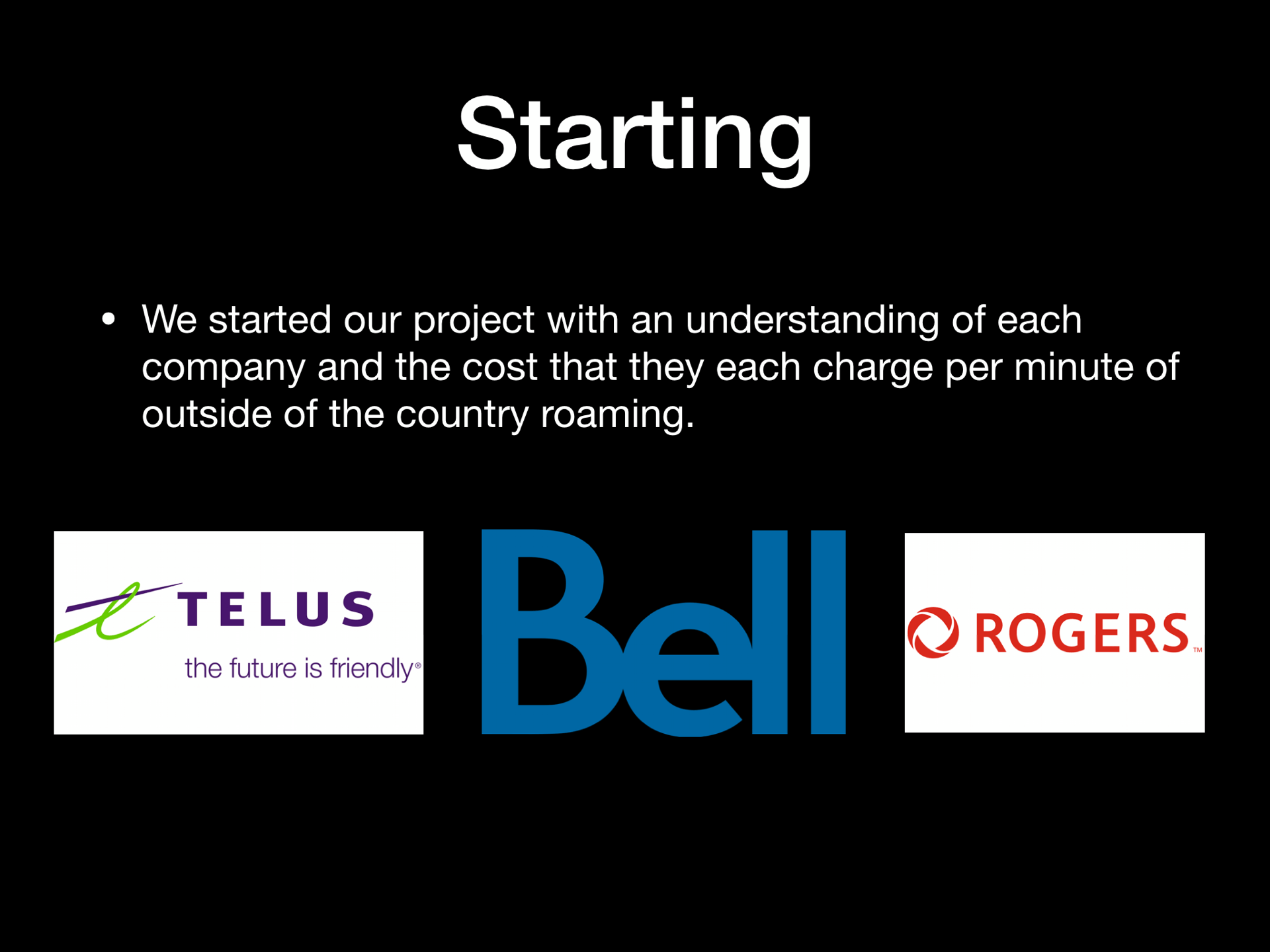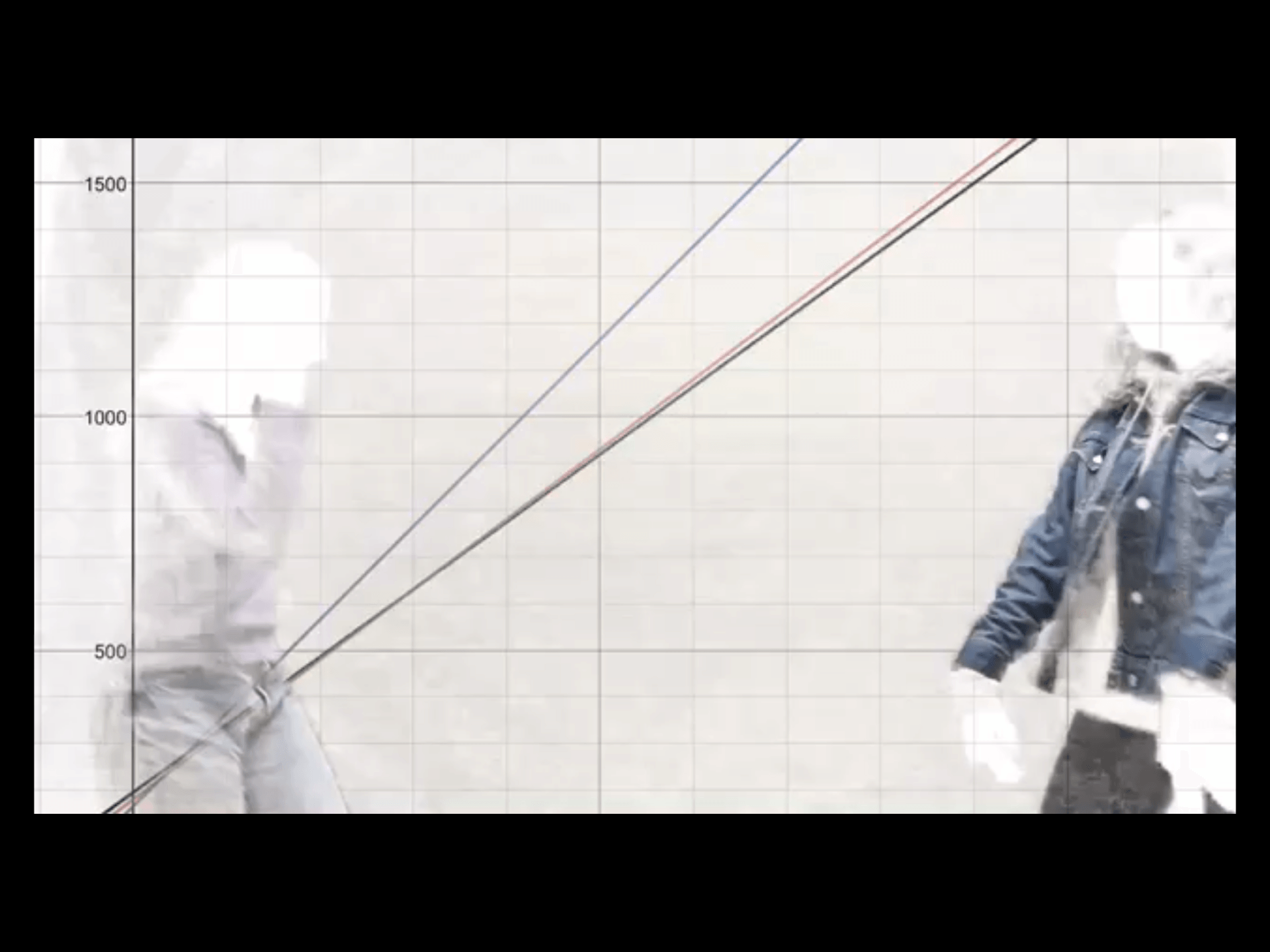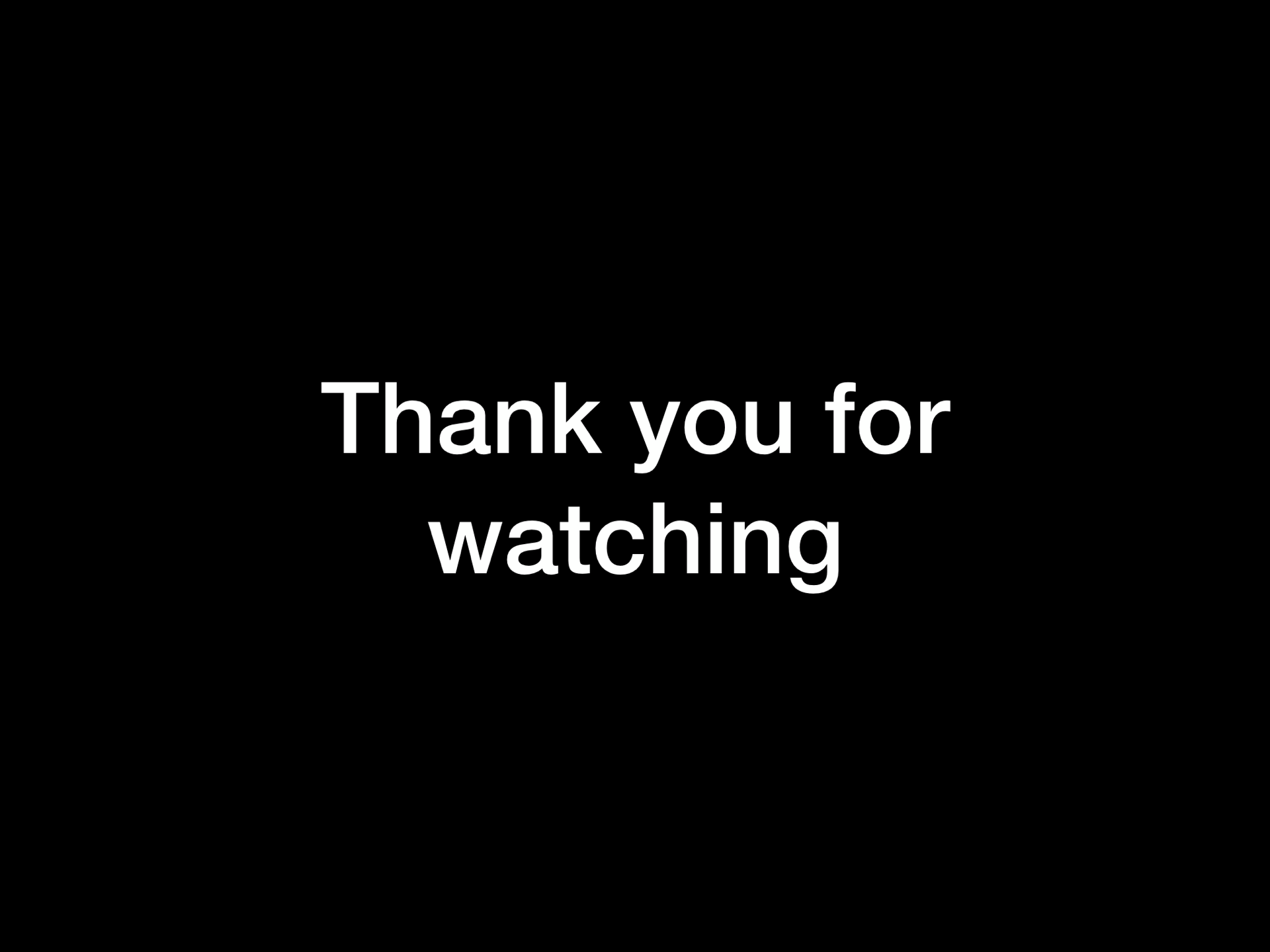Recently in scimatics we have been exploring the costs for phone plans with when you need to roam for calls outside of canada. To start our work off we decided to pick the companies that we would be researching during the project. We chose to research Rogers, Bell and Telus.
The plans we found for each are as follows:
Rogers = $2.00 per minute roaming, and a starting cost of $165
Telus = $1.50 per minute roaming, and a starting cost of $180
Bell = $1.45 per minute roaming, and a starting cost of $195
The next step was to turn this information into a slope intercept equation. The slope intercept equation makes it so that you can graph the equation. In the slope intercept equation each letter has a meaning they are : Y=MX+B.
Y = the grand total, what you want to find out.
M = the slope intercept.
X = the first variable, the amount you have per will have.
B = the Y intercept
Here are the equations for the cell phone companies.
Rogers: y = 2.00x + 165
Telus: y = 1.50x + 180
Bell: y = 1.45x + 195
We then graphed these equations to see the slope of them. These are the graphs that we made.
Rogers is purple, Telus is red, and bell is green. The best cell company, most affordable, would be Bell after 300 minutes roaming!
The final step of the project was to make a keynote to show our leaning to the class. Our keynote was a simple step by step version of this blog post. To make our project unique, Morgan and I decided to create a rap to help other people understand our project and alos to create a more unique lens on this project.
Here is our keynote
Throughout this project I used a few curricular competencies. I would like to mention what they are and how I used them below!
The first competency I used was explore, analyze and apply mathematical ideas using reason, technology and other tools. I used this competency because throughout the project I was constantly learning about analyzing new mathematical ideas such as the slope equation, and then applying it to our project, and finding where our facts and ideas would fit into the equation.
The second competency I used was represent mathematical ideas in concrete, pictorial and symbolic forms. I used this competency because for my end project I was able to show my learning in many different forms. We had concrete forms of our math in the form of graphs and equations and to spice it up a bit, we decided to do a rap, and rap the math to have a more creative form of our project!
The final curricular competency that I used was using mistakes as opportunities to advance learning. Throughout the project we made a few mistakes with our math, but instead of getting down, or continuing to present math that was incorrect, we decided to ask around and figure out how to properly present the math in graph form!
Thank you for reading!
adlih
















Published by